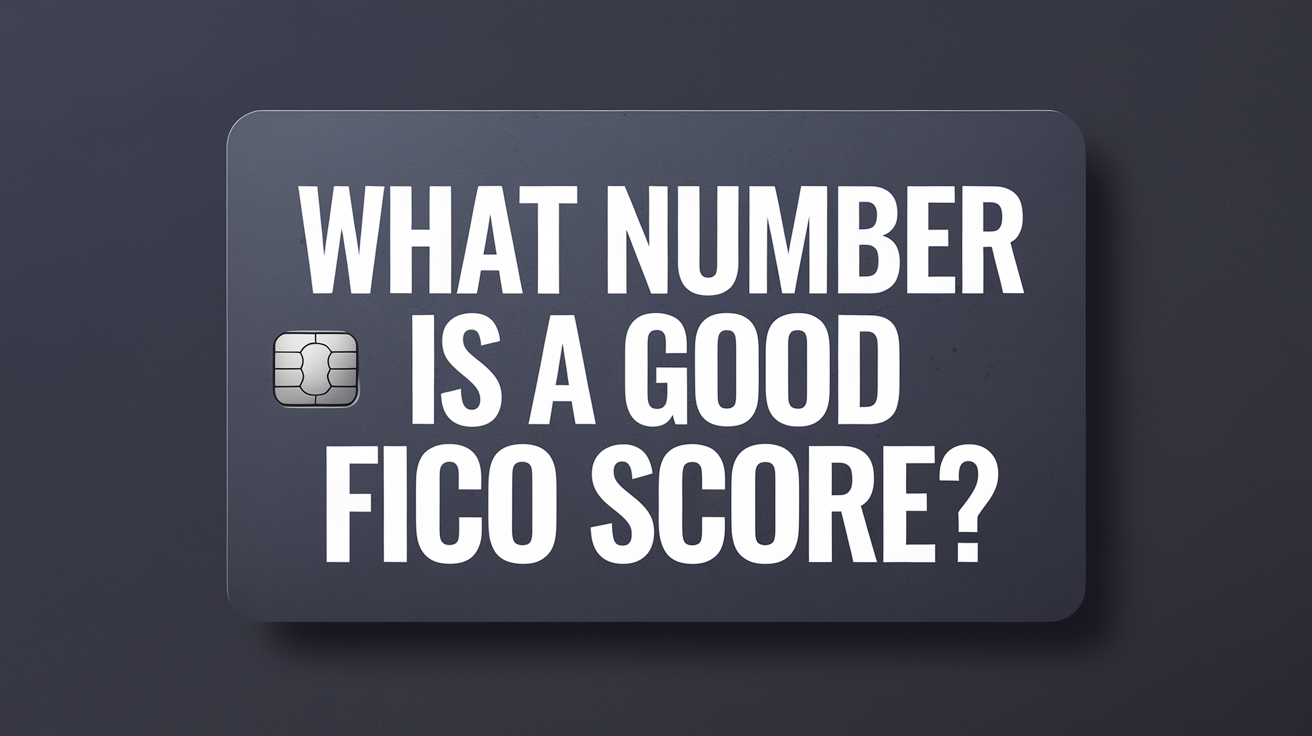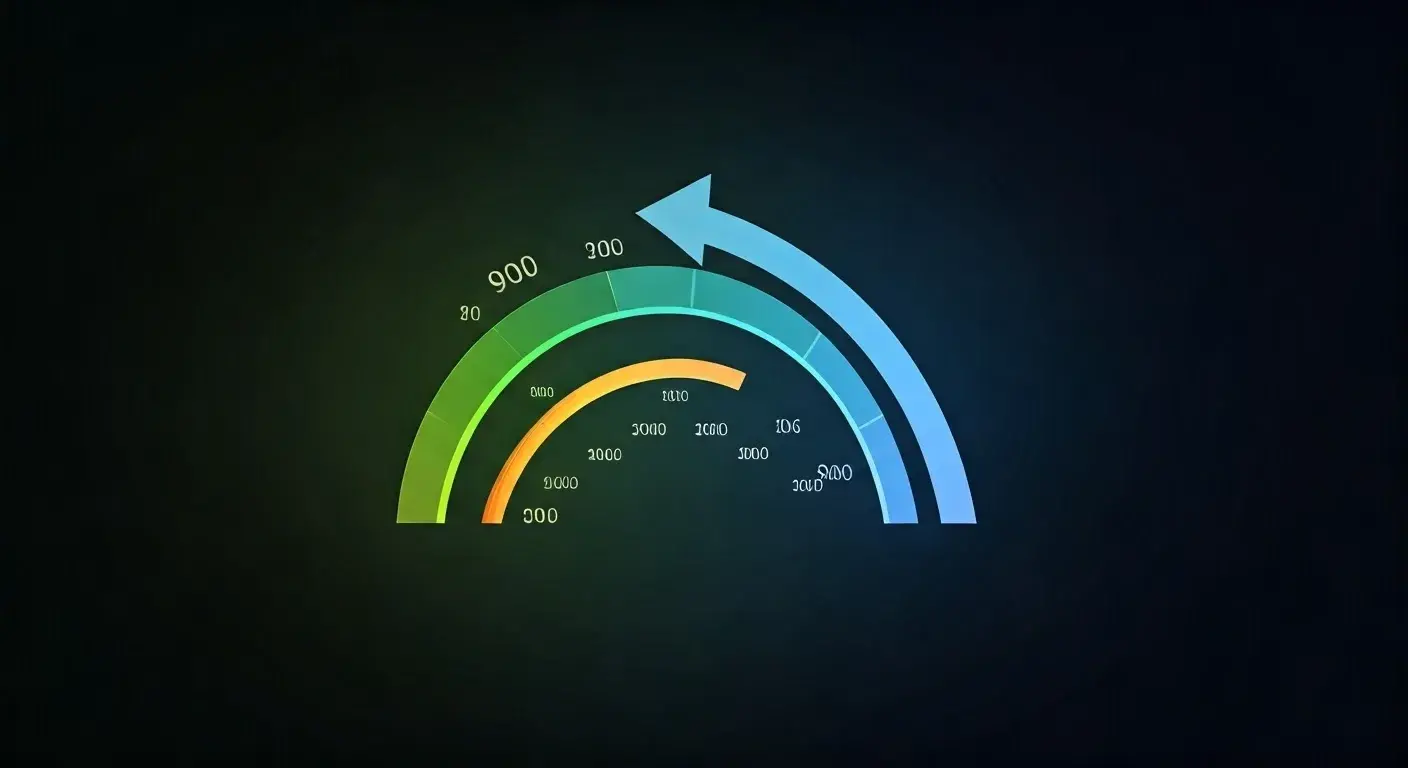-
Posted on: 05 Aug 2024

-
Understanding what constitutes a "good" FICO score is crucial for securing favorable loan terms, lower interest rates, and even better rental agreements. This guide will demystify FICO score ranges, explain what each tier signifies, and provide actionable insights for improving your creditworthiness in 2025.
Understanding FICO Scores: The Basics
FICO scores, developed by the Fair Isaac Corporation, are a cornerstone of credit assessment in the United States. These three-digit numbers, typically ranging from 300 to 850, represent an individual's credit risk to lenders. A higher FICO score generally indicates a lower risk, suggesting that the borrower is more likely to repay debts as agreed. Lenders use FICO scores as a primary tool to make decisions about approving loans, credit cards, mortgages, and even setting interest rates and insurance premiums.
The FICO scoring model is proprietary, meaning the exact algorithms are not publicly disclosed. However, FICO has publicly shared the general categories of information used and their approximate weight in calculating the score. Understanding these components is the first step toward managing and improving your credit standing. It's important to note that FICO scores are dynamic; they change over time based on your credit behavior. Regularly monitoring your credit report and score is a proactive approach to financial health.
FICO Score Ranges Explained: What Does Each Number Mean?
FICO scores are categorized into several tiers, each representing a different level of creditworthiness. While the exact definitions can vary slightly depending on the lender and the specific FICO model used, the general ranges provide a clear picture of where you stand. As of 2025, these ranges are widely accepted:
Excellent Credit (800-850)
This is the pinnacle of credit scoring. Individuals with scores in this range are considered exceptionally low risk. They have a long history of responsible credit management, consistently pay bills on time, maintain low credit utilization, and have a diverse credit mix with no significant negative marks. Lenders are eager to offer their best products and lowest interest rates to borrowers in this category.
Very Good Credit (740-799)
Scores in this range are highly desirable. Borrowers with "very good" credit demonstrate a strong track record of responsible financial behavior. They may have a minor blemish on their credit report, such as a single late payment from years ago, but overall, they are considered reliable. They will likely qualify for most loans and receive competitive interest rates, though perhaps not always the absolute lowest available.
Good Credit (670-739)
This is a solid credit range that many consumers aim for. A "good" FICO score indicates that you have managed credit responsibly for a significant period, though there might be some minor issues like occasional late payments or higher credit utilization. You will likely be approved for many types of credit, but the interest rates offered might be slightly higher than for those with "very good" or "excellent" scores. This is often considered the baseline for many standard loan products.
Fair Credit (580-669)
Scores in the "fair" range suggest a credit history that has some negative aspects. This could include a history of late payments, significant debt, or a relatively short credit history. Borrowers in this category may find it challenging to get approved for new credit, and if approved, they will likely face higher interest rates and less favorable terms. Some lenders specialize in working with borrowers in this range, but it often comes at a cost.
Poor Credit (300-579)
This range signifies significant credit risk. Scores below 580 often indicate a history of serious credit problems, such as defaults, bankruptcies, or a substantial number of late payments. Obtaining new credit can be very difficult, and if successful, it will almost certainly come with very high interest rates and strict terms. Many lenders will outright deny applications from individuals in this score range.
It's important to remember that these are general guidelines. Lenders may have their own internal scoring models or specific thresholds that differ from these broad categories. However, understanding these ranges provides a valuable benchmark for assessing your financial health.
What is a Good FICO Score in 2025?
In 2025, a "good" FICO score generally starts in the upper 600s and extends into the 700s. Specifically, a score of 670 or higher is typically considered good, opening doors to a wider array of credit products and more favorable terms. However, to truly be competitive and access the best rates and benefits, aiming for a score of 740 and above is highly recommended. This range often qualifies you for "very good" to "excellent" credit tiers, where lenders compete to offer you their most attractive deals.
For instance, securing a mortgage with the lowest possible interest rate often requires a FICO score of 740 or even higher. Similarly, obtaining a prime auto loan or a credit card with significant rewards and a low APR is much more probable with a score in the 700s. While a score in the 600s can still lead to approval, the cost of borrowing will likely be higher. Therefore, while 670+ is good, 740+ is where you unlock premium financial opportunities.
It's also worth noting that the definition of "good" can be context-dependent. For example, some subprime lenders might consider a score in the low 600s as "good" for their specific products, but this comes with significant drawbacks in terms of cost and risk. For mainstream financial products and competitive rates, aim for the higher end of the spectrum.
Key Factors Influencing Your FICO Score
FICO scores are calculated based on five primary categories of information found in your credit report. Understanding the weight of each category is crucial for strategic credit management:
Payment History (Approximately 35% of score)
This is the most critical factor. It reflects whether you pay your bills on time. Late payments, missed payments, defaults, bankruptcies, and collections can significantly damage your score. Even a single 30-day late payment can have a negative impact, with more severe consequences for longer delays (60, 90 days or more).
Amounts Owed (Credit Utilization) (Approximately 30% of score)
This category looks at how much credit you are using compared to your total available credit. This is known as credit utilization ratio. Keeping this ratio low, ideally below 30% and even better below 10%, is highly beneficial. For example, if you have a credit card with a $10,000 limit, keeping your balance below $3,000 is good, but keeping it below $1,000 is even better for your score.
Length of Credit History (Approximately 15% of score)
This factor considers how long your credit accounts have been open and the average age of your accounts. A longer credit history generally suggests more experience managing credit, which is viewed favorably. Closing older accounts, especially those with a positive payment history, can shorten your average account age and potentially lower your score.
Credit Mix (Approximately 10% of score)
This refers to the variety of credit accounts you have. Having a mix of different types of credit, such as revolving credit (credit cards) and installment loans (mortgages, auto loans, student loans), can be beneficial. However, this factor is less influential than payment history or credit utilization, and it's not advisable to open new accounts solely to diversify your credit mix.
New Credit (Approximately 10% of score)
This category considers how many new credit accounts you have opened recently and how many hard inquiries are on your credit report. Opening multiple new accounts in a short period or having numerous hard inquiries can signal increased risk to lenders, potentially lowering your score temporarily. However, the impact is usually less significant than other factors and tends to diminish over time.
By focusing on these five pillars, you can develop a comprehensive strategy to build and maintain a strong FICO score.
Strategies to Improve Your FICO Score
Improving your FICO score is a marathon, not a sprint, but consistent, positive actions can lead to significant gains over time. Here are actionable strategies for 2025:
1. Pay All Bills On Time, Every Time
This is the single most impactful action you can take. Set up automatic payments or reminders to ensure you never miss a due date for credit cards, loans, utilities, or rent. If you have a history of late payments, focus on getting current and staying current.
2. Reduce Your Credit Utilization Ratio
Aim to keep your credit utilization below 30% on each credit card, and ideally below 10%. If you have high balances, focus on paying them down. Consider requesting a credit limit increase on existing cards (if you can resist the temptation to spend more) to lower your utilization ratio. For example, if you owe $4,000 on a card with a $5,000 limit (80% utilization), paying it down to $1,500 (30% utilization) will significantly boost your score.
3. Avoid Opening Too Many New Accounts at Once
While a diverse credit mix can help, opening multiple new credit accounts in a short period can negatively impact your score due to hard inquiries and a shorter average account age. Only apply for credit when you genuinely need it.
4. Keep Old, Unused Credit Accounts Open
Provided they don't have annual fees you're unwilling to pay, keeping older credit accounts open (even if you don't use them often) can help maintain a longer average credit history and a lower credit utilization ratio. Make a small purchase on them occasionally and pay it off immediately to keep them active.
5. Dispute Errors on Your Credit Report
Obtain copies of your credit reports from all three major bureaus (Equifax, Experian, and TransUnion) at least once a year via AnnualCreditReport.com. Review them carefully for any inaccuracies, such as incorrect personal information, accounts you don't recognize, or erroneous late payment markers. Dispute any errors with the credit bureau immediately.
6. Become an Authorized User (Use with Caution)
If you have a trusted friend or family member with excellent credit, they could add you as an authorized user to their credit card. Their positive payment history on that account can then reflect on your credit report, potentially boosting your score. However, ensure the primary cardholder manages the account responsibly, as their negative activity could also impact you.
7. Consider a Secured Credit Card or Credit-Builder Loan
If you have a low score or no credit history, these products are designed to help. A secured credit card requires a cash deposit that becomes your credit limit. A credit-builder loan involves borrowing a small amount that is held in an account while you make payments, which are then reported to the credit bureaus.
Implementing these strategies consistently will contribute to a healthier FICO score over time. Patience and discipline are key.
FICO Scores and Loan Approvals: What Lenders Look For
Lenders use FICO scores as a primary indicator of your creditworthiness, but they often consider other factors in their decision-making process. Understanding what lenders look for can help you present the strongest possible application.
Risk Assessment
At its core, a FICO score helps lenders assess the risk associated with lending you money. A higher score suggests a lower probability of default, making you a more attractive borrower. For example, a lender might have a threshold FICO score for approving mortgages; borrowers below this score might be automatically denied or require a manual review.
Interest Rates and Terms
Your FICO score directly influences the interest rate and terms you'll be offered. Borrowers with excellent credit typically receive the lowest interest rates, saving them thousands of dollars over the life of a loan. Conversely, a lower score means higher interest rates to compensate the lender for the increased risk.
Consider this 2025 example for a $300,000 30-year mortgage:
FICO Score Range Average Interest Rate (2025 Estimate) Monthly Payment Total Interest Paid 800+ 6.5% $1,896 $382,560 740-799 6.8% $1,957 $404,440 670-739 7.2% $2,035 $432,600 580-669 8.0% $2,201 $492,360 As you can see, even a few percentage points difference in interest rate can result in tens of thousands of dollars in extra interest paid over the loan term.
Other Underwriting Factors
While FICO is crucial, lenders also examine:
- Income and Employment Stability: Lenders want to see a steady income that can comfortably cover loan payments.
- Debt-to-Income Ratio (DTI): This compares your total monthly debt payments to your gross monthly income. A lower DTI indicates you have more disposable income to handle new debt.
- Loan-to-Value Ratio (LTV): For secured loans like mortgages or auto loans, this compares the loan amount to the value of the asset being financed. A lower LTV (meaning you're putting more money down) reduces the lender's risk.
- Down Payment: A larger down payment reduces the loan amount and the lender's risk.
- Collateral: For secured loans, the value and condition of the collateral are assessed.
- Relationship with the Lender: Sometimes, a long-standing positive relationship with a bank or credit union can be a minor factor.
In summary, a strong FICO score is your best asset for loan approvals and favorable terms, but it's part of a larger financial picture that lenders evaluate.
Beyond FICO: Understanding Other Credit Scores
While FICO is the most widely used credit scoring model, it's not the only one. Lenders and other entities may use different scoring systems, including VantageScore, which is a competitor developed by the three major credit bureaus (Equifax, Experian, and TransUnion). Understanding these differences can provide a more complete picture of your credit health.
VantageScore
VantageScore is a collaborative effort by the credit bureaus and is designed to be similar to FICO in its purpose and general scoring range (often 300-850). The exact algorithms differ, and the weighting of credit factors can vary. For example, VantageScore may place a slightly higher emphasis on credit utilization and the recency of credit inquiries compared to FICO.
Key differences and similarities:
- Scoring Range: Both FICO and VantageScore typically use a range from 300 to 850.
- Factors Considered: Both models consider payment history, credit utilization, length of credit history, credit mix, and new credit.
- Weighting: The exact weighting of these factors differs between the models.
- Trended Data: VantageScore has historically placed more emphasis on "trended data," which looks at how your credit behavior has evolved over time, not just a snapshot.
- Consumer Accessibility: Many free credit monitoring services and credit card issuers provide consumers with access to their VantageScore, making it more readily available to the public than some FICO versions.
Industry-Specific FICO Scores
FICO also develops specialized scores for different industries. For instance:
- FICO Auto Score: Used by auto lenders to assess the risk of financing a vehicle.
- FICO Bankcard Score: Used by credit card issuers.
- FICO Mortgage Score: Tailored for mortgage lenders, with a slightly different range and emphasis on factors relevant to home loans.
These industry-specific scores may have different ranges or a different emphasis on certain factors relevant to that particular type of credit. For example, a FICO Auto Score might weigh payment history on auto loans more heavily.
Why It Matters
While FICO remains the dominant player, understanding that multiple scoring models exist is important. If you check your credit score through various apps or services, you might see different numbers. This is often due to the use of different scoring models or different versions of the FICO score. The general trends and the advice for improving scores remain largely the same across most reputable models: pay bills on time, keep balances low, and manage your credit responsibly.
For critical applications like mortgages, lenders will typically pull a specific FICO score, often a mortgage industry version. It's always beneficial to know which score is being used for a particular application if possible.
Common Myths About FICO Scores Debunked
The world of credit scores is often shrouded in misinformation. Here are some common myths about FICO scores that are worth debunking:
Myth 1: Checking your own credit score hurts your score.
Fact: Checking your own credit score or report is considered a "soft inquiry" and does not affect your FICO score. Only "hard inquiries," which occur when a lender checks your credit as part of a loan application, can have a minor, temporary impact.
Myth 2: You need to carry a balance on your credit card to build credit.
Fact: You do not need to carry a balance. In fact, carrying a balance and paying interest is not beneficial for your score. The key is to demonstrate responsible use by making on-time payments. The credit utilization ratio is important, but this can be managed by paying off your balance in full each month or keeping utilization very low.
Myth 3: Closing old credit cards will improve your score.
Fact: Closing old credit cards can actually hurt your score. It reduces the average age of your credit history and can increase your credit utilization ratio if you have balances on other cards. Unless an old card has a high annual fee or a history of issues, it's often best to keep it open and use it sparingly.
Myth 4: Everyone uses the same FICO score.
Fact: As mentioned, there are many different FICO score versions, including industry-specific scores (auto, credit card, mortgage) and different versions within those categories (e.g., FICO Score 8, FICO Score 9, FICO Score 10). Lenders choose which score version to use based on their lending products and risk models.
Myth 5: A single late payment will ruin your score forever.
Fact: While a single late payment can certainly lower your score, its impact diminishes over time. The severity of the impact depends on how late the payment was (30, 60, 90 days), how recent it was, and your overall credit history. A long history of on-time payments can help offset the impact of an isolated late payment.
Myth 6: It takes years to recover from a bankruptcy or foreclosure.
Fact: While these are serious negative marks, recovery is possible. A bankruptcy can stay on your report for up to 10 years, but with diligent credit management after the event, you can begin to rebuild your score. Many individuals are able to qualify for credit again within a few years of a bankruptcy or foreclosure by demonstrating new, positive credit behavior.
Understanding these facts can help you make informed decisions about managing your credit and avoid common pitfalls.
Maintaining a Healthy FICO Score Long-Term
Building a good FICO score is an achievement, but maintaining it requires ongoing vigilance and good financial habits. Here’s how to keep your score in top shape for the long haul:
1. Continue On-Time Payments
This is non-negotiable. Make it a habit to pay all your bills by their due dates. Automating payments can be a lifesaver, but always double-check that your accounts have sufficient funds to cover them.
2. Monitor Your Credit Utilization
Regularly check your credit card balances. Aim to keep your utilization ratio below 30% on each card and overall. If you see it creeping up, prioritize paying down balances. Consider making payments before your statement closing date to report a lower balance to the credit bureaus.
3. Review Your Credit Reports Annually
Use AnnualCreditReport.com to get free copies of your credit reports from Equifax, Experian, and TransUnion. This allows you to catch any errors, fraudulent activity, or outdated information that could be negatively impacting your score.
4. Be Strategic About New Credit
Only apply for new credit when you genuinely need it. Each application for credit typically results in a hard inquiry, which can slightly lower your score. Spreading out applications over time is also advisable.
5. Diversify Your Credit Wisely
While not a primary driver, a healthy mix of credit types (credit cards, installment loans) can be beneficial. However, avoid opening accounts you don't need just for the sake of diversification.
6. Understand the Impact of Closing Accounts
As discussed, closing older accounts can shorten your credit history and increase utilization. Evaluate the necessity of closing accounts, especially those with no annual fee and a positive history.
7. Avoid Unnecessary Debt
The best way to maintain a good score is to avoid accumulating excessive debt in the first place. Live within your means and make conscious decisions about borrowing.
8. Stay Informed About Credit Trends
Credit scoring models evolve. While the core principles remain the same, staying aware of general trends in credit scoring can help you adapt your strategies if necessary. For example, newer FICO models might place more emphasis on emerging data points.
By consistently applying these principles, you can ensure your FICO score remains strong, providing you with access to the best financial opportunities throughout your life.
Conclusion
In 2025, a "good" FICO score is not just a number; it's a gateway to financial opportunities. Generally, a score of 670 or higher is considered good, but to unlock the most favorable loan terms, interest rates, and credit card offers, aiming for 740 and above is the benchmark for "very good" to "excellent" credit. Understanding that payment history and credit utilization are the most influential factors is paramount. By prioritizing on-time payments, keeping credit utilization low, and diligently monitoring your credit reports for errors, you can build and maintain a strong FICO score.
Remember that improving your credit is a journey. While immediate fixes are rare, consistent positive behavior over time will yield results. Leverage strategies like becoming an authorized user (cautiously), using secured credit cards, or credit-builder loans if you're starting out or recovering from past credit challenges. Always remember that your FICO score is a dynamic reflection of your financial habits, and by making informed, responsible choices, you can secure your financial future and achieve your borrowing goals.











